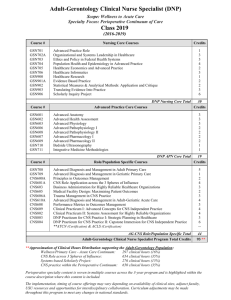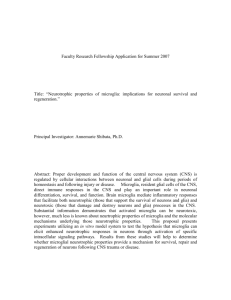ABSTRACS_files/Schwartz-abstract step-by
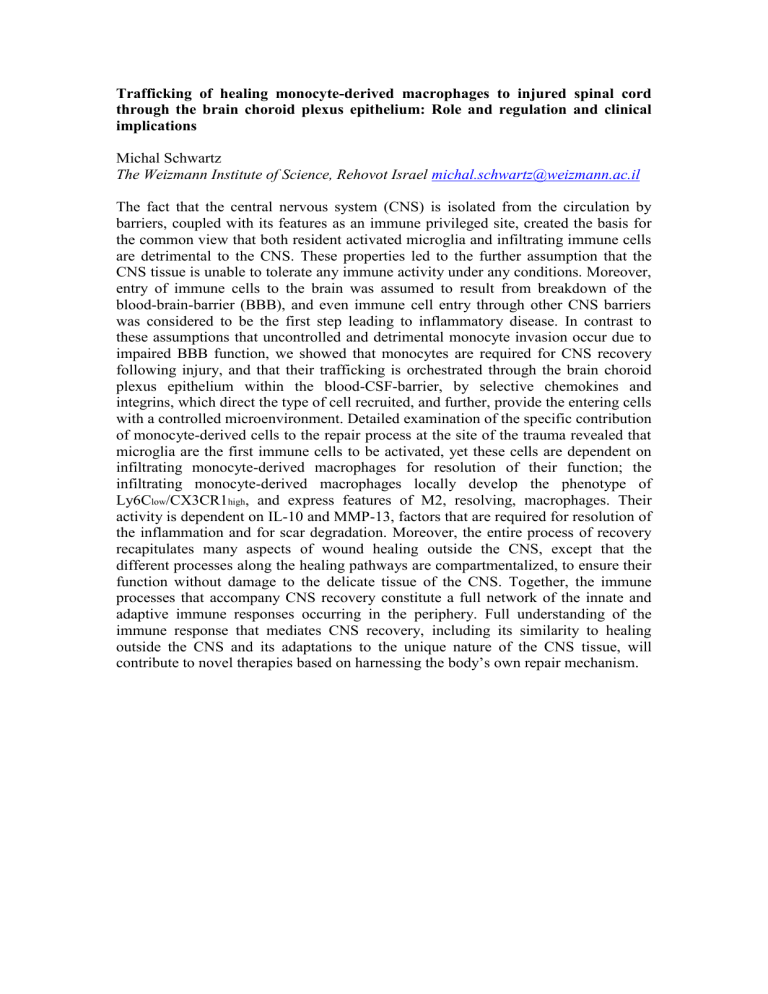
Trafficking of healing monocyte-derived macrophages to injured spinal cord through the brain choroid plexus epithelium: Role and regulation and clinical implications
Michal Schwartz
The Weizmann Institute of Science, Rehovot Israel michal.schwartz@weizmann.ac.il
The fact that the central nervous system (CNS) is isolated from the circulation by barriers, coupled with its features as an immune privileged site, created the basis for the common view that both resident activated microglia and infiltrating immune cells are detrimental to the CNS. These properties led to the further assumption that the
CNS tissue is unable to tolerate any immune activity under any conditions. Moreover, entry of immune cells to the brain was assumed to result from breakdown of the blood-brain-barrier (BBB), and even immune cell entry through other CNS barriers was considered to be the first step leading to inflammatory disease. In contrast to these assumptions that uncontrolled and detrimental monocyte invasion occur due to impaired BBB function, we showed that monocytes are required for CNS recovery following injury, and that their trafficking is orchestrated through the brain choroid plexus epithelium within the blood-CSF-barrier, by selective chemokines and integrins, which direct the type of cell recruited, and further, provide the entering cells with a controlled microenvironment. Detailed examination of the specific contribution of monocyte-derived cells to the repair process at the site of the trauma revealed that microglia are the first immune cells to be activated, yet these cells are dependent on infiltrating monocyte-derived macrophages for resolution of their function; the infiltrating monocyte-derived macrophages locally develop the phenotype of
Ly6C low
/CX3CR1 high
, and express features of M2, resolving, macrophages. Their activity is dependent on IL-10 and MMP-13, factors that are required for resolution of the inflammation and for scar degradation. Moreover, the entire process of recovery recapitulates many aspects of wound healing outside the CNS, except that the different processes along the healing pathways are compartmentalized, to ensure their function without damage to the delicate tissue of the CNS. Together, the immune processes that accompany CNS recovery constitute a full network of the innate and adaptive immune responses occurring in the periphery. Full understanding of the immune response that mediates CNS recovery, including its similarity to healing outside the CNS and its adaptations to the unique nature of the CNS tissue, will contribute to novel therapies based on harnessing the body’s own repair mechanism.


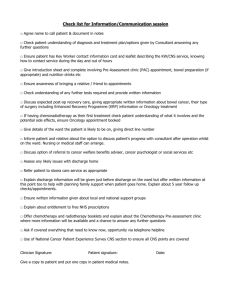
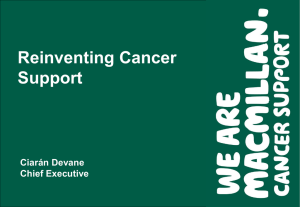



![Immune Sys Quiz[1] - kyoussef-mci](http://s3.studylib.net/store/data/006621981_1-02033c62cab9330a6e1312a8f53a74c4-300x300.png)
